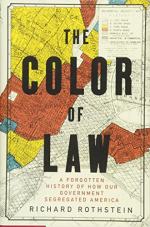
|
| Name: _________________________ | Period: ___________________ |
This quiz consists of 5 multiple choice and 5 short answer questions through Chapter 10: Suppressed Incomes.
Multiple Choice Questions
1. What does Rothstein say the government has an obligation to provide?
(a) Protection for the powerless.
(b) A fair society.
(c) Reparations.
(d) Return to places of origin.
2. What percentage of black families’ homes were governed by the type of sale Rothstein describes here where black families bought from blockbusters?
(a) 85%.
(b) 25%.
(c) 55%.
(d) 40%.
3. How does Rothstein say UCLA students got black students into their racially exclusive neighborhood?
(a) By disguising them.
(b) By hiding them.
(c) By reclassifying them as white.
(d) By calling them domestic servants.
4. What does Rothstein say was the evidence the FHA used to back up the claim that African Americans in a white neighborhood would decrease property value and therefore increase losses?
(a) Years of property value data.
(b) There was no hard evidence.
(c) Anecdotes from homeowners in Kentucky.
(d) Generalizations about the purity of races.
5. When did the Tennessee Valley Authority create jobs and housing for whites only?
(a) 1933.
(b) 1944.
(c) 1921.
(d) 1917.
Short Answer Questions
1. Where did developers try to get around Buchanan by claiming it only applied to Kentucky?
2. How did the HOLC change the face of mortgages in 1933?
3. In what year did the U.S. Supreme Court uphold racially restrictive covenants as well as exclusionary zoning ordinances?
4. What should the Federal Reserve, the Federal Deposit Insurance Company (FDIC), the Office of Thrift Supervision and the Comptroller of the Currency should have done but did not do?
5. What does Rothstein say binds Americans to solving the problem of housing segregation?
|
This section contains 293 words (approx. 1 page at 300 words per page) |

|




